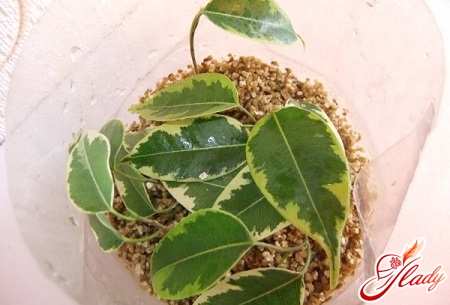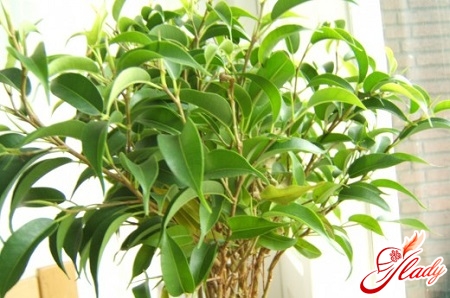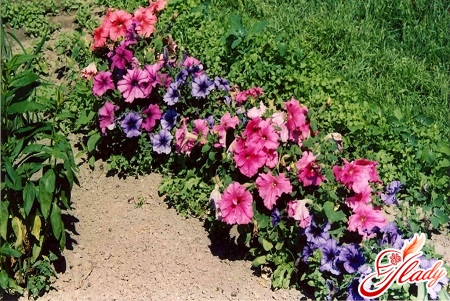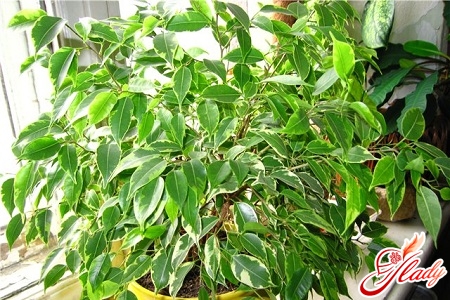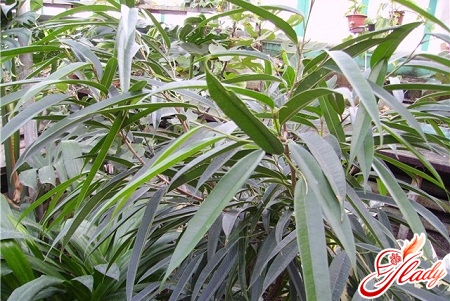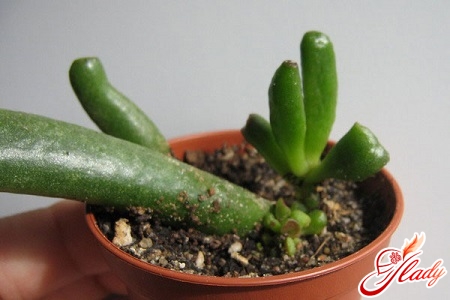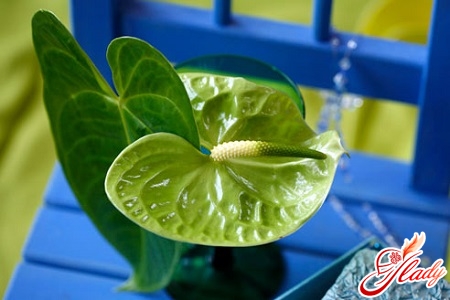 All people are divided into those who breed indoorflowers, and those who do not breed them. And if you read these lines, then, for sure, belong to the category of lovers of green pets. Moreover, you are interested in the flower Anthurium or, as it is called in everyday life, Male happiness. This indoor flower is actually interesting. And, above all, the fact that in indoor floriculture is represented by a variety of species, differing in shape, texture, size and coloring of leaves and flowers. Many people want to have such a multi-faceted beauty in their home, but not everyone knows how to care for an anturium. However, the matter is fixable. We will try to find out what kind of plant it is - Anthurium, what is remarkable about its flowering, what care it takes, and how to grow it at home.
All people are divided into those who breed indoorflowers, and those who do not breed them. And if you read these lines, then, for sure, belong to the category of lovers of green pets. Moreover, you are interested in the flower Anthurium or, as it is called in everyday life, Male happiness. This indoor flower is actually interesting. And, above all, the fact that in indoor floriculture is represented by a variety of species, differing in shape, texture, size and coloring of leaves and flowers. Many people want to have such a multi-faceted beauty in their home, but not everyone knows how to care for an anturium. However, the matter is fixable. We will try to find out what kind of plant it is - Anthurium, what is remarkable about its flowering, what care it takes, and how to grow it at home.
Botanical portrait
Anthurium is, in fact, a huge genus of plants,It has about a thousand species and belongs to the family of aroids. The main number of plants entering this genus is epiphytes, that is, it has air roots and shortened stems. However, there are among the anthuriums and creepers with long stems, and herbaceous terrestrial plants that grow in the tropical and subtropical areas of North America. Grow anthuriums in South America (Argentina, Mexico, Paraguay, Brazil). All kinds of anthurium have leathery leaves. However, the shape and size of different species varies greatly. There are anthuriums with whole, dissected and notched leaves. There are specimens with miniature leaves and real giant leaves reaching a meter length. There are flowers with velvety and satin leaves. There are plants with foliage of monochromatic coloring, but there are also those that have a silver pattern on the leaves. No less interesting are the flowers of representatives of this genus. By the way, the flowering of the anthurium also served as a source of its botanical name. In Greek, this name translates as "flower-tail". In fact, the anthurium has inflorescences in the form of a caudal or long cylindrical cob. But the inflorescence itself is rather unimaginative, and the ornamentality of the plant is given by the color of the leaves, the coverlets. Although in most species the sucker-colored coverlet is small and not brightly colored, there are anthuriums and with large succinct leaves of bright color, shiny or matte texture. By the way, for an unusual shape of the inflorescence in some countries anthurium is called a flamingo flower. And indeed, the flowering of the anthurium often causes associations with these graceful birds. The wide flowering in the culture was served by the colorful flowering of these plants. Not only that some species of this flower have a special ornamentality, today there are about eighty artificially produced hybrids and a huge number of cultivars. On an industrial scale, anthuriums are grown as cut flowers, and in indoor floriculture and garden culture, the anthurium is known as an ornamental foliage plant, which also features spectacular flowering. 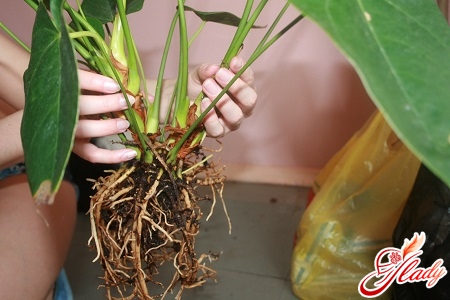
Species and varieties of anthuriums
In the domestic garden and indoor culture, only some species and varieties of representatives of this genus are particularly popular.
- Anthurium Andre
Botanical name Anthurium andraeanum Lindenex Andre. The species that became the progenitor of most known hybrids. In nature it grows in the humid tropics of Colombia and Ecuador. This plant is an epiphyte having air roots and a short stem. Anturium Andre has dark green leaves, heart-shaped and large, reaching twenty centimeters wide and forty centimeters long. The flower is a light cob with a large bright veil, also having a heart-shaped shape and strong shine. Flowering lasts for more than a month, and in the cut, the flowers remain fresh for about four weeks. After flowering, the veil does not fall off, but becomes rough and fades. At the same time, the anturium Andre keeps decorativeness almost all the time.
- Anthurium Baker
Botanical name Anthurium bakeri Hook. f. It grows in the tropics of South America. Anthurium Baker is an epiphyte plant with long leaves of a belt-shaped form up to half a meter in length and up to nine centimeters wide. Below the sheet is covered with a brown crab. The inflorescence is short - a cream cob and a pale yellow-green veil with a purple border.
- Anthurium majestic
Botanical name Anthurium magnificum Linden. Distributed as a terrestrial plant or epiphyte in the mountainous tropical forests of Colombia. Anthurium majestic has a distinctive feature - tetrahedral petiole with sharp edges in the form of wings. Outwardly similar to Anthurium crystal. On the leaves it has olive-green veins, and the cover of the inflorescence is longer than in other species.
- Anthurium crystal
Botanical name Anthurium crystallinum Lind. et Andre. In nature, Anturium Crystal is known as the epiphyte of tropical forests, whose habitat ranges from Peru to Panama. Leaves are velvety, decorated with contrast veins. In length reach forty centimeters, in width - twenty two. The green or purple hue of the bedspread rises on long peduncles.
- Anthurium Hooker
Botanical name Anthurium hookeri Kunth. Grows in Anturium Hooker in the monsoon forests of the Antilles. The leaves are broad, bright green, decorated with black dots. The coverlet is narrow and long, green, and the cob is purple.
- Anthurium Scherzer
Botanical name Anthurium scherzerianumSchott. Anthurium Scherzer is a land plant or epiphyte of the mountain forests of Costa Rica. Dark green leaves lanceolate or elliptical, matte, with a pattern of black dots. The bryonic coverlet of bright shades of red and orange, up to twelve and six centimeters wide. Anthurium Scherzer is cultivated mainly as a plant for cutting.
- Anthurium climbing
Botanical name Anthurium scandens. Epiphyte with a meter stalk, common from Mexico to Brazil. Skin leaves of lanceolate form from below are covered with black dots. The bodily coverlet is pale green in color, the cob is yellowish green. Anthurium climbing is appreciated for its light flowering and shade-endurance.
- Anthurium many-sectioned
Botanical name Anthurium polyschistumSchult. et Idrobo. It grows in the moist forests of the Amazon valley. A characteristic feature - dissected (palmate) leaves wavy at the edges. Bryotta cover and cob of equal length. When blossoming, the veil is strongly bent. In indoor floriculture, Anthurium is often valued as a mini-liana. 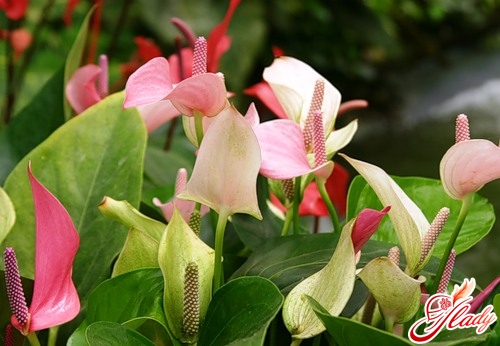
Care
Almost all the anthuriums known in the roomfloriculture, - epiphytes. Therefore, care for the anthurium should be appropriate care for these plants. How to care for an anturium at home? These photophilous plants, which must be kept in rooms with scattered light. In this anthurium must be shaded from the direct sun. The best place for a flower is the north-western window. A comfortable temperature for this plant is the range from 20 to 28 degrees in summer and 15-16 degrees in winter. However, hybrids of anthuriums are required at the time of the bookmarking of flower buds (September-February) at a temperature of 12-16 degrees. Only under such conditions is possible their flowering. If you want to bloom earlier, then in January, you need to gradually raise the temperature in the room, where the anturium is kept, to twenty-five degrees. Watering room anthurium should be abundant. However, the soil in the pot in the intervals between watering should be allowed to dry out about a third of the height of the flower pot. You can check the moisture level of the soil mixture with a wooden stick stuck to the ground. To flowering anthurium was abundant, since September, it is necessary to increase the intervals between watering. Water the anthurium should only soft, standing water, and immediately after watering wipe dry the bottom of the flowerpot and the pan, as stagnant water can cause decay of the roots. As for air humidity, it should be high (up to 95%). From dry air, the anthurium suffers, and its flowering may not occur. Therefore, it is necessary to constantly spray anthurium, and stalks to enclose hygroscopic material (for example, sphagnum moss). To increase the humidity of the air near the plant, you can fill the flowerpot tray with moistened claydite or gravel. It is also necessary to periodically wipe the anthurium from dust. Important! During flowering, spray anthurium carefully, so that the water drops do not fall on the flowers, otherwise they will remain dark spots. Proper care for the anthurium implies regular feeding. Add room anthurium with dilute complex fertilizers two or three times a month. The most anthurium on foliar top dressing is the most responsive. Transplant the Anthurium as they grow, and transplant the young plants every year. For the cultivation of anthurium it is necessary to select a loose substrate, which passes moisture and air well. It is especially important that the soil mix in which anthurium is grown consisted of large particles. Approximate composition of the substrate for anthurium: chopped moss (two parts), peat (two parts), turf (one part). Or: deciduous land (two parts), chopped moss (one part), turf land (one part).
Reproduction
To reproduce a home anthurium can be vegetativelyor seeds. In vegetative propagation, apical cuttings or stem shoots are used. Scions with aerial roots are immediately planted in flower pots, and apical cuttings are first rooted in moist sand. In this case, cover the cuttings with a transparent film or a container. During seed reproduction it is necessary to carry out artificial pollination, when flowering occurs. To do this, use a soft brush to transfer the pollen from the flower to the flower. But in this case the polluted anthurium flowers should be of varying degrees of maturity. Pollination is carried out several times. Seeds in the anturium berries ripen in eight to ten months after pollination. Immediately after collecting their seeds are sown in shallow bowls filled with light soil, spreading the seeds on the soil surface and gently press into the ground. Then the dishes with seeds are covered with glass. Approximately two weeks later seedlings germinate. After the appearance of this leaf, the seedlings are dived and grown at constant humidity and temperature.
Possible problems
Diseases to which the plant anturium is susceptible, -this stem and root rot and anthracnose. Rot is caused by low temperature in the room and waterlogging of the soil. In anthracnose, anthurium is treated with fungicides. With an excess of calcium in the soil, the tips of the leaves grow black in the plant, and the leaves twist under drafts, too dry air, sunburn and lack of lighting. In addition to diseases, the anthurium can suffer from the attack of ticks, aphids, scabs and insects. In these cases, the plant is treated with a weak tobacco infusion, the leaves and stems are washed with soapy water and treated with the help of special preparations. While observing the rules of caring for this flower and growing it in conditions favorable for the plant, flowering occurs regularly and on time. Well, the fact that the anthurium is quite capricious, it is understandable. After all, he comes from humid and warm tropics, the climate of which to recreate at home is quite difficult. But if you try, then you will succeed - you now know how to care for the anthurium. Good luck!




